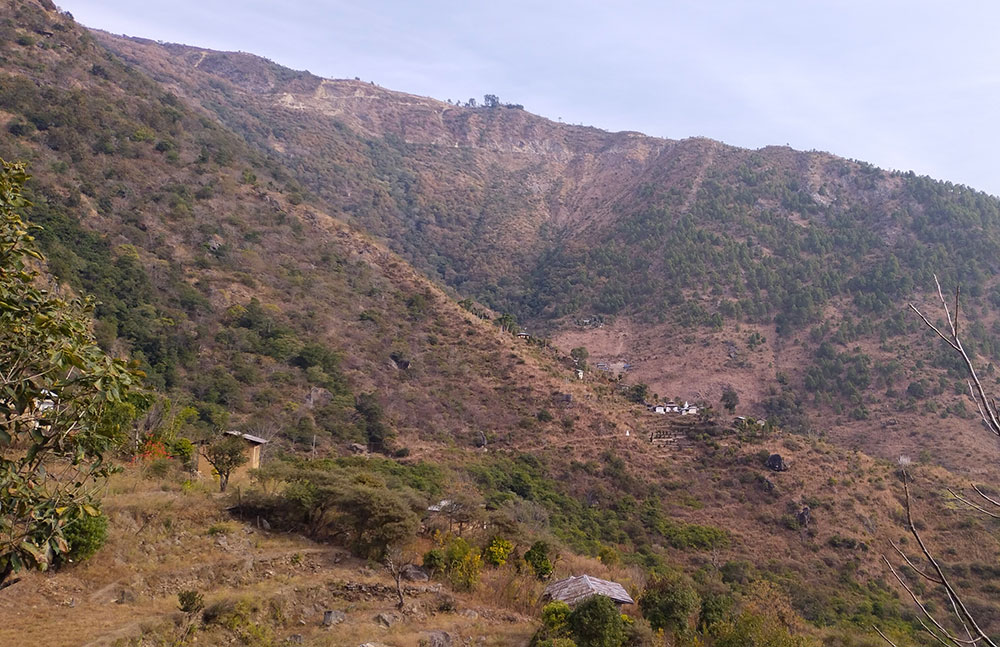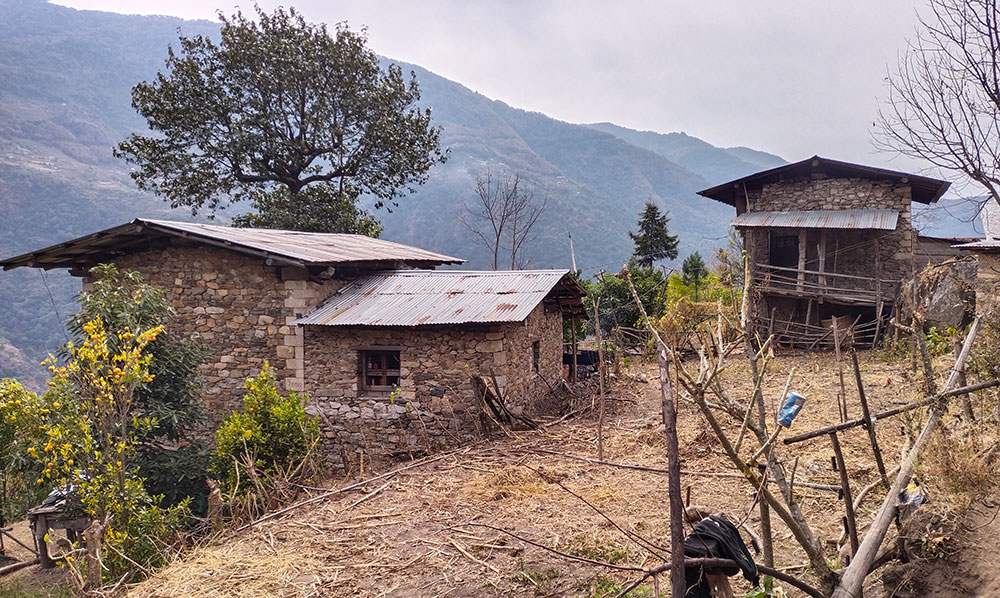Neten Dorji
The quaint and tranquil village of Jangphuste in Trashiyangtse is typical of a rural Bhutanese village.
However, on a closer look it is alarming to find that most of the houses are locked and abandoned, and overgrown with weeds and creepers. It is a reminder of a common pattern of many people having left the village looking for opportunities elsewhere.
All but, maybe, 78-year-old Tandin.
“I am happy here,” he said. “Though my children want me to stay with them, I prefer staying here,” he says. But he is worried about his empty village.
Jangphutse has 20 abandoned households or gungtong, with some houses having been abandoned for over 20 years. It appears the access to improved services such as irrigation canals, school, and primary health services, could not stop the villagers from migrating elsewhere.
Tandin’s neighbour Thukten is a strong man in the village. He liked working in the farms.

Empty houses increasing in Manam Chemkhar village
“I find joy in my village as we have the opportunity to sell our agricultural products to Tawang, Arunachal Pradesh,” said Thukten. “Ensuring our livelihood through fieldwork ensures we never face hunger.”
Similarly, of 38 households in neighbouring Duktey village, about 22 houses had been abandoned in the past few years.
A resident of the village, Tashi Dorji, said that gungtong was becoming a burden for those staying back. “As more fields are left fallow, wildlife predation on crops and animals are increasing. The pressure of having to contribute to village activities is also increasing because of fewer people in the village.”
Despite challenges, Tashi Dorji and his friends do not want to abandon their village. Their children also work in different parts of Bhutan. “They should remember their village and come home frequently,” he said.
The reasons for the increasing gungtong in Jangphutse and Duktey village was no different from other villages across the country.
Residents said that those with jobs in the towns were coming to the village to take their parents with them. “Some are babysitting their grandchildren, I heard,” said an elderly citizen.
The rate of gungtong was increasing despite interventions from the gewog and government.
Local leaders said that they alone cannot solve the issue.
Toedtsho Gup, Dechen Wangdi, said that although many programmes under agriculture and livestock sectors were initiated to help farmers get involved and stay back in the village, the rate of gungtong had been increasing.
“Those residing near the border do not receive incentives like the highlanders. The government and policymakers need to introduce incentives to encourage people to stay in the border area,” he said. Most of the people from Jangphutse resided near the gewog centre, or in other parts of the country.
“The owners rarely visit the village, it’s also difficult to trace some of them. Besides the issue of collecting taxes, the community vitality is also affected,” the gup said.
Jangphutse and Duktey are among the most far-flung villages in Trashiyangtse. The village today has electricity and most houses have piped drinking water.
“People still migrate to urban areas due to the lack of road access. If a ropeway is provided, the number of empty houses might reduce,” said a resident. “I feel that people are leaving because Duktey is remote.”


